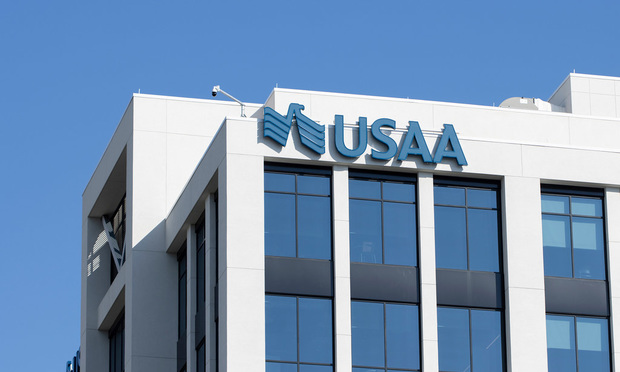How much time does it take you to process the information you receive for an excess & surplus (E&S) lines client? The E&S Joint Working Group is bringing awareness to the industry that if today's systems aren't based on industry standards, the industry is missing the opportunity to streamline its workflows, connect to a number of industry partners, and ultimately reduce its costs.
Formed in 2008, the E&S Joint Working Group (ESJWG) is an alliance of carriers, agents and vendors working with the American Association of Managing General Agents (AAMGA), ACORD, Agents Council for Technology (ACT) of the Independent Agents & Brokers of America, and the National Association of Professional Surplus Lines Offices (NAPSLO). ESJWG's mission is to improve the efficiencies for retail agents, general agents, wholesale brokers and carriers by promoting the use of ACORD standards, best-practice workflows and the electronic exchange of data among each of the business partners. The group comprises retail agent/general agent, carrier and Lloyd's subgroups.
In the retail agent to MGA/carrier space, there has been a 14% increase in the number of ACORD Standards-based commercial lines transactions flowing through IVANS, a division of Applied and one of the providers of technology solutions for data exchange and integration between insurance carriers and agencies. According to their statistics, by the end of 2014, the number of commercial lines transactions flowing through the network had exceeded 8 million; this year the growth continues.
Participants of the ESJWG have said throughout the years that 80% of the data shared between an agent and Excess & Surplus lines carrier/MGA is the same as the data sent within the retail space. During the AAMGA conference, the presenter shared one example, an apartment complex at a college campus. There are buildings, equipment and liability exposures. The staff on premises is covered for workers' compensation, and employee benefits; however, the only reason these apartments may be written in an Excess market is the location of the buildings. Most of the underwriting data hasn't changed, only the exposure due to the location of the structures.
The ESJWG group has discussed that the placement of coverage or protection of assets can involve many parties, for a variety of reasons. A goal of this initiative is to be able to efficiently and systematically share data throughout the pipeline of all the parties involved. ACORD Standards bring efficiency into the process, and this group is discussing how the current standards may be used. The group also is discussing what is missing in the standards and will continue to submit maintenance requests to ACORD to broaden the scope of the data standards.

(Photo: Shutterstock/Toria)
Policy issuance workflow
During a recent call the ESJWG started working on policy issuance workflow, and the group talked about three basic types of Policies:
- Contract Policy – The MGA has the pen, the authority to bind and issue the policy.
- Lloyd's Policy – The MGA is a Cover holder and has the Authority to bind and customize the policy forms.
- Broker Policy – The MGA may have some authority, but needs to work with a carrier. The MGA acts like a Broker.
The goal of the group is to document the workflow to rate, collect and share all the data needed to populate and compile the packet of policy and supporting documents for the underwriter to process the policy. The rating step is a beginning, but not the actual front-end process for policy issuance. The rating process, which is usually by line of business, helps the agent select the carrier. When the underwriters are involved, they aggregate the data, and there is an interaction between the parties to share more data and agree on the specific coverage forms included.
There is also work being done for those MGAs or Cover holders utilizing the London Market. The London group's current focus is on how risks are placed and reported to London. A working group has been reviewing current processes. This work has highlighted the complexities of getting data from retail agents. There are many manual steps requiring individuals to key into a number of different systems for rating, quoting, Certificate issuance and to report to London. The next face-to-face meeting of the London sub-group is being held in London in late September to review these findings and discuss future models and processes. If you're interested in this work, please let us know.
From a Global perspective, there is a successful pilot known as Project Tomorrow being implemented in Australia with an MGA using ACORD standards and London's central messaging hub, TMEL, to report the risk information. As we learn from and work together on our industry's efficiencies, the information that we learn from this pilot could be a useful future model for U.S. MGAs as well.
If you too don't want to use your valuable time manually processing your excess & surplus lines business, join the more than 600 individuals following and assisting the ESJWG in taking the next step to helping us automate and streamline the industry's costs. Send us an e-mail asking to be added to the group by contacting [email protected] or [email protected].
Want to continue reading?
Become a Free PropertyCasualty360 Digital Reader
Your access to unlimited PropertyCasualty360 content isn’t changing.
Once you are an ALM digital member, you’ll receive:
- Breaking insurance news and analysis, on-site and via our newsletters and custom alerts
- Weekly Insurance Speak podcast featuring exclusive interviews with industry leaders
- Educational webcasts, white papers, and ebooks from industry thought leaders
- Critical converage of the employee benefits and financial advisory markets on our other ALM sites, BenefitsPRO and ThinkAdvisor
Already have an account? Sign In Now
© 2024 ALM Global, LLC, All Rights Reserved. Request academic re-use from www.copyright.com. All other uses, submit a request to [email protected]. For more information visit Asset & Logo Licensing.








